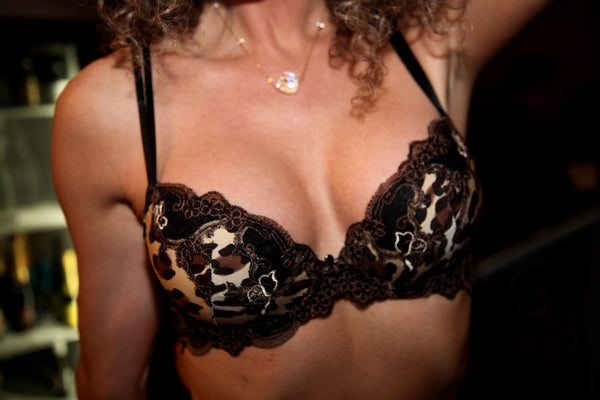Easy Ways to Check Bra Fit: The Band
We’ve all heard the scare stories about the huge percentage of women wearing the wrong bra size. From Oprah to magazines to newspaper headlines, the world has been in an uproar about bra fit for a number of years now. The question remains: how do you know if your bra fits correctly? This segment of our three-part blog series is focused on one of the hardest-working pieces of a bra: the band.
Unfortunately, there is no sizing standard in the lingerie industry to make understanding bra fit easy on you - every bra from every designer fits somewhat differently. Sizing shifts within offerings from an individual designer can be caused by differences in the rigidity of the materials used, changing manufacturing facilities, or implementing feedback on previous collections. We have universally found that bra bands and cups manufactured in the UK run the smallest, French bands tend to be cut more generously, and Italian lines are all over the map. With this much variation in the fit of each individual bra, it is imperative that buyers know more than just their bra size. Add to this the fact that many women regularly fluctuate between sizes, and you have what can be a completely perplexing shopping experience! Knowing the signs of a good fit, and the way to adjust sizing to reach them, is vital in maintaining your lingerie wardrobe.
THE BAND
The bulk of the support offered by a bra is from the band, so it is critical - especially if you are busty - that the band be snug enough to offer this support. A band that is too large leaves the bulk of the work to the straps, which can result in a myriad of discomforts, including back pain from the weight of the beasts on the straps, and a bra that creeps up during the day. Quel horror!
The band on a bra should be snug against the back, and should sit comfortably in a straight line beneath the shoulder blades - the wearer should be able to insert two fingers under the band at the back without excessive struggle, but should not be able to easily pull the band much further away from the body. When you are first buying a bra, you want to start with the hooks on their loosest setting, which allows you to tighten the fit as the elastic stretches with wear.
Try lifting your shoulders, and then your arms over your head. Did your bra shift up? This can be a sign that the band is too big. Ideally, your bra band will stay put through any number of contortions, allowing you to receive continuous support, regardless of your activity. Try a bra with a smaller band size - but be sure to size up in the cup!
If you’ve ever taken your bra off at the end of a long day to find painful red marks where the band lay, this is an indication that the band is too tight. Sometimes the first few wearings can leave these marks and, as the bra stretches out, they will dissipate. If they don’t, you may want to invest in a band extender to help make wearing the bra more comfortable as it stretches. If you’re trying on a bra that seems to have too strong a stranglehold on your ribcage but fits well in the cup, try one band size larger and one cup size smaller.
Keep an eye on our blog this week for more articles on bra fit basics!

